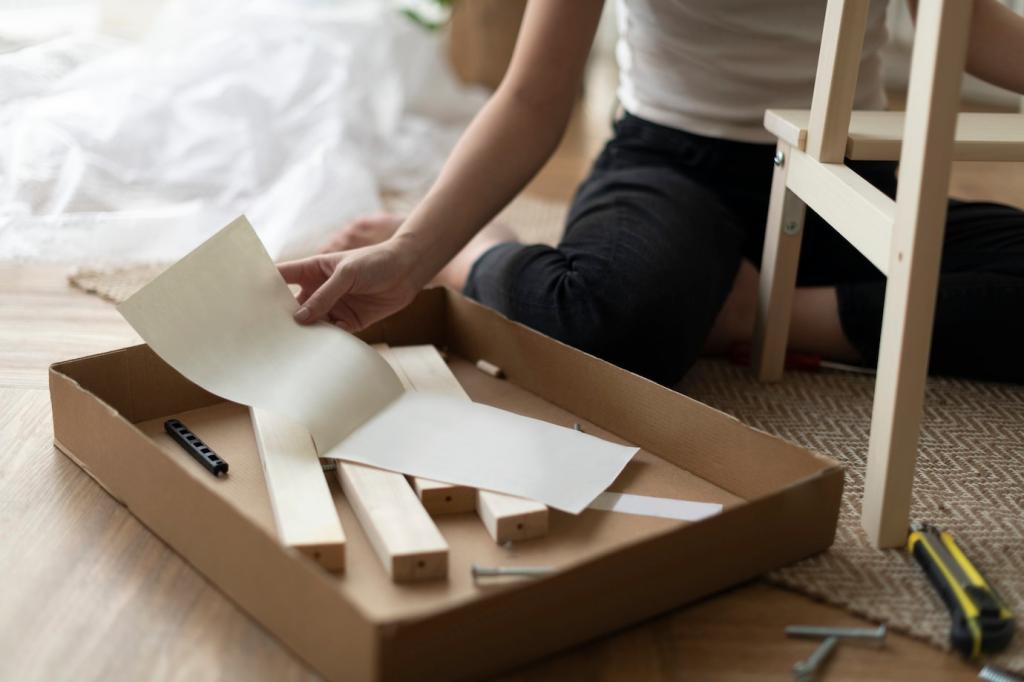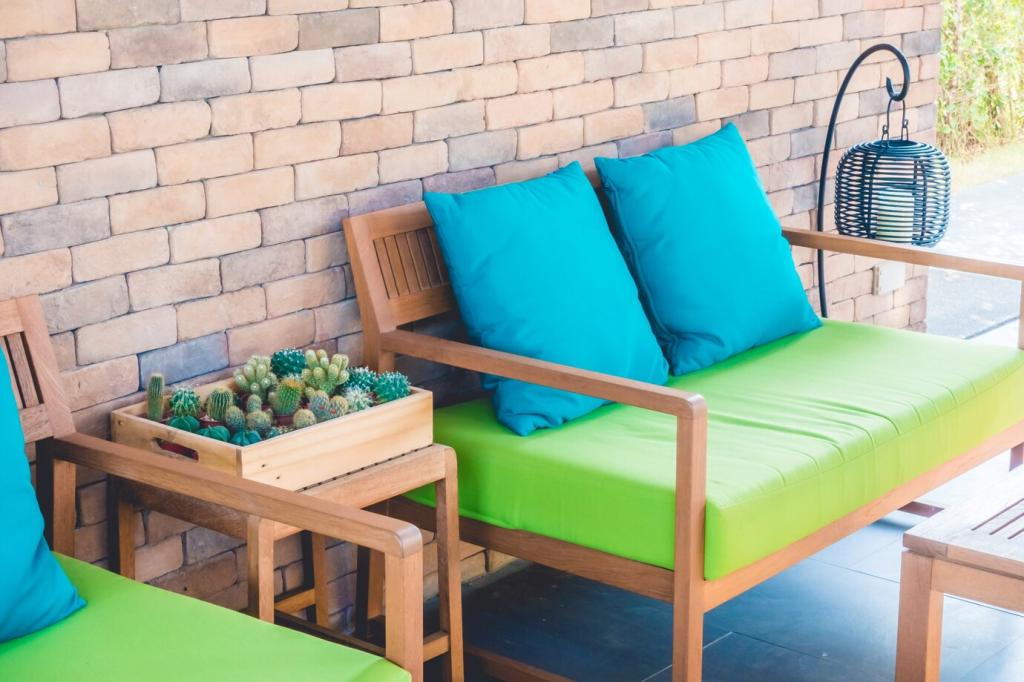Environmentally Friendly Furniture Repair Techniques
Foundations of Eco-Conscious Repair
Begin with a gentle diagnosis: identify structural issues, finish failures, or loose joints before committing to removal. Often, careful tightening and targeted stabilization accomplish more than dramatic tear-downs, saving materials, time, and your project’s embodied carbon.
Foundations of Eco-Conscious Repair
Prioritize what already exists. Stabilize joints, re-glue veneers, and reinforce weak points before replacing anything. If a finish is failing, consider spot refinishing first. Only as a last resort should you introduce new components or substantial replacements.
Foundations of Eco-Conscious Repair
Respect the piece’s original narrative. Repair using compatible, reversible approaches that future caretakers can understand and improve. This mindset preserves provenance, reduces chemical dependency, and invites participation in a circular culture of maintenance rather than disposal.
Safer Adhesives, Fillers, and Finishes
Favor waterborne finishes and low-VOC adhesives. They cure with fewer harmful emissions, improve indoor air quality, and often clean up with soap and water. Always review safety data sheets, ventilate well, and dispose of residues through local hazardous waste programs.
Safer Adhesives, Fillers, and Finishes
Linseed, tung, and hemp oils, plus beeswax and carnauba blends, provide durable, repairable protection. Applied thinly and patiently, these finishes develop a warm sheen and patina while avoiding the aggressive solvents and isocyanates common in conventional products.


Tools and Methods That Minimize Impact
Sharp hand planes, card scrapers, and chisels remove less material, preserve surfaces, and require no electricity. They are quieter, safer with practice, and create shavings instead of microdust, which is kinder to lungs and easier to compost or recycle.
Tools and Methods That Minimize Impact
When sanding is unavoidable, choose light passes with high-quality paper and attach a HEPA vacuum. Wear a respirator rated for particulates. Collect dust for proper disposal, and avoid over-sanding, which risks both historical detail and unnecessary material loss.
Gentle Diagnosis and Documentation
We marked loose rungs, checked mortise wear, and photographed every joint to track orientation. Identifying a failed hide-glue bond, we decided on disassembly with steam and careful clamping, choosing minimal intervention to preserve tool marks and aged finish.
Reversible Repairs and Safer Products
After steaming joints apart, we cleaned mating surfaces and re-glued with fresh hot hide glue. Finish touch-ups used a waterborne shellac alternative and a thin linseed oil glaze, keeping odor low, curing fast, and allowing future restorers easy reversibility.
Outcome, Lessons, and Invitation
The chair regained stability without new wood, and its cherished patina remained. The owner noticed improved indoor air quality during curing. Post your own chair challenges below, and subscribe for monthly deep dives into environmentally friendly furniture repair techniques.

Finishing Without the Fumes
Apply plant oils in whisper-thin coats, allowing proper polymerization between layers. Buff thoroughly to avoid tackiness. This slower approach yields depth and resilience while keeping volatile emissions low and enabling easy spot repairs years down the line.

Upcycling, Patching, and Visible Mending
Reclaimed Wood with Character
Patch missing corners using offcuts from old floorboards or cabinet doors. Their tight grain and seasoned stability blend well and carry history forward. Align grain direction thoughtfully to minimize future movement and reduce the need for aggressive adhesives.
Dutchmen, Butterflies, and Storytelling
A contrasting butterfly key can both stabilize a crack and spark conversation. Choose a species that complements the original piece. The repair’s honesty signals care, skill, and commitment to environmentally friendly furniture repair techniques over disposable consumption habits.
Textiles, Cane, and Natural Fibers
Replace worn seats with handwoven cane, hemp webbing, or wool felt. Natural fibers breathe, are repairable, and age gracefully. They also invite seasonal maintenance rituals, deepening your relationship with the piece and reducing landfill-bound synthetic upholstery waste.
Community Repair and the Circular Mindset
Tool Libraries and Shared Spaces
Borrow clamps, specialty hand planes, and HEPA vacuums instead of buying rarely used gear. Shared resources reduce costs and consumption while building friendships. Attend community repair nights to learn techniques and pass along tips you’ve found especially helpful.
Material Swaps and Salvage Yards
Trade veneer offcuts, vintage hardware, and spare hide glue pearls. Salvage yards often stock old-growth scraps perfect for repairs. Sourcing this way reduces demand for new materials and preserves historically compatible options for period-sensitive furniture conservation projects.
Teach, Document, and Subscribe
Share before-and-after photos, mistakes, and material lists. Teaching demystifies sustainable methods and multiplies impact. Subscribe for monthly tutorials, and invite a friend who cares about the planet and heirloom pieces. Together, we normalize repair as a joyful default.
Join our mailing list
